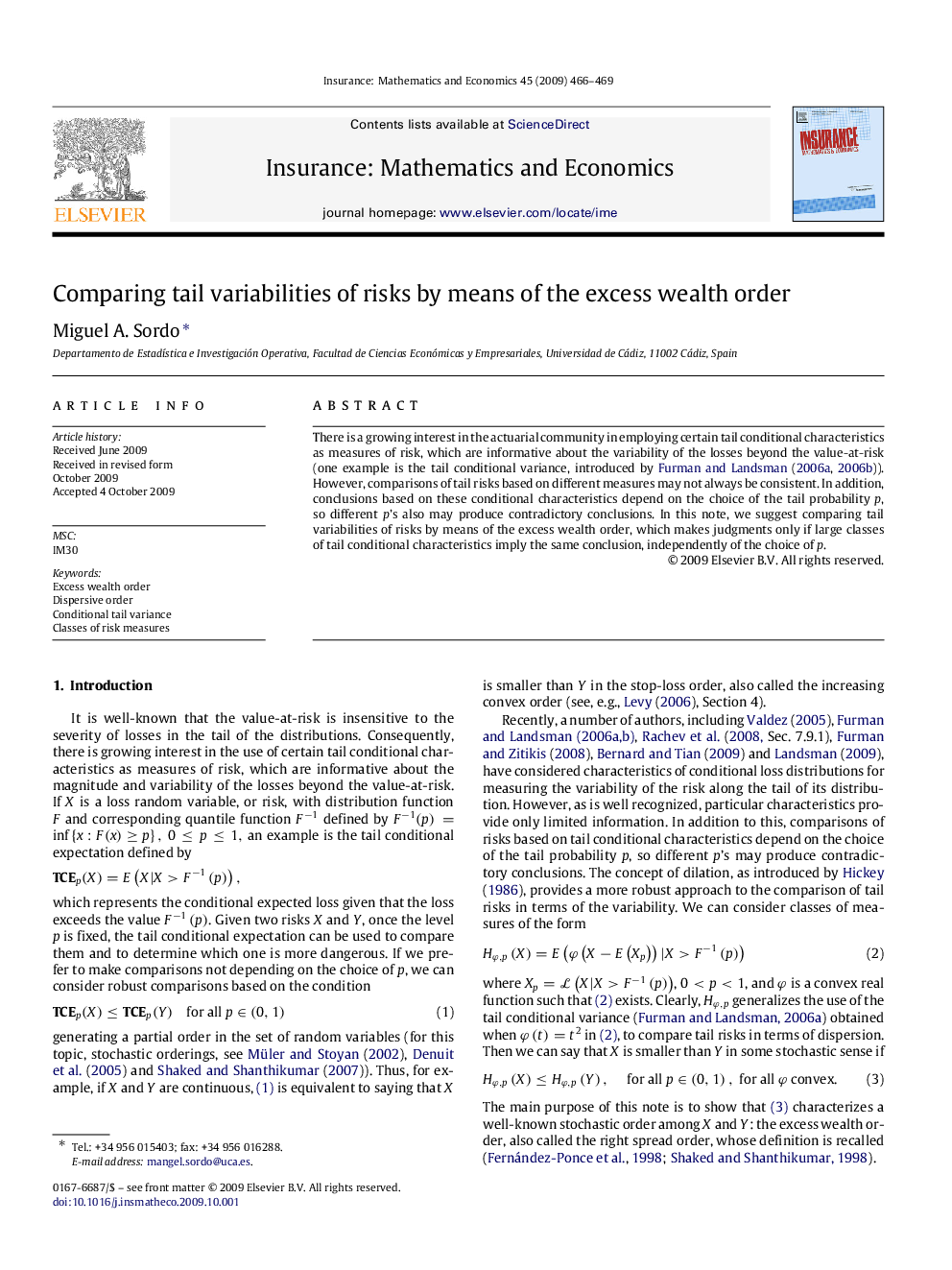| Article ID | Journal | Published Year | Pages | File Type |
|---|---|---|---|---|
| 5077026 | Insurance: Mathematics and Economics | 2009 | 4 Pages |
Abstract
There is a growing interest in the actuarial community in employing certain tail conditional characteristics as measures of risk, which are informative about the variability of the losses beyond the value-at-risk (one example is the tail conditional variance, introduced by Furman and Landsman (2006a, 2006b)). However, comparisons of tail risks based on different measures may not always be consistent. In addition, conclusions based on these conditional characteristics depend on the choice of the tail probability p, so different p's also may produce contradictory conclusions. In this note, we suggest comparing tail variabilities of risks by means of the excess wealth order, which makes judgments only if large classes of tail conditional characteristics imply the same conclusion, independently of the choice of p.
Related Topics
Physical Sciences and Engineering
Mathematics
Statistics and Probability
Authors
Miguel A. Sordo,
